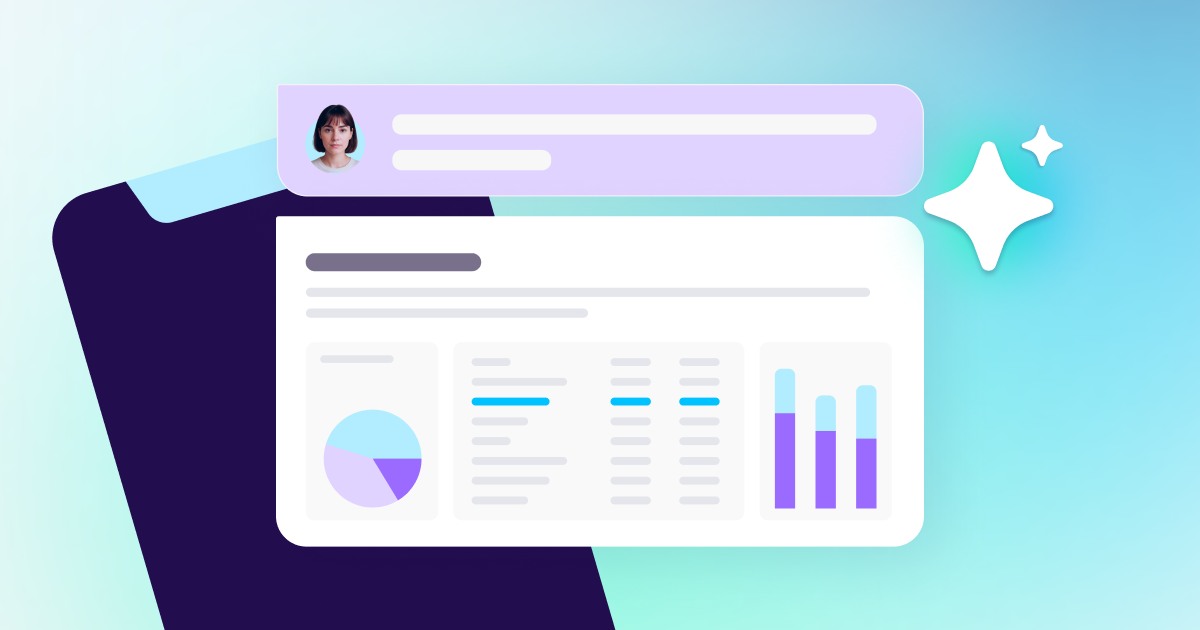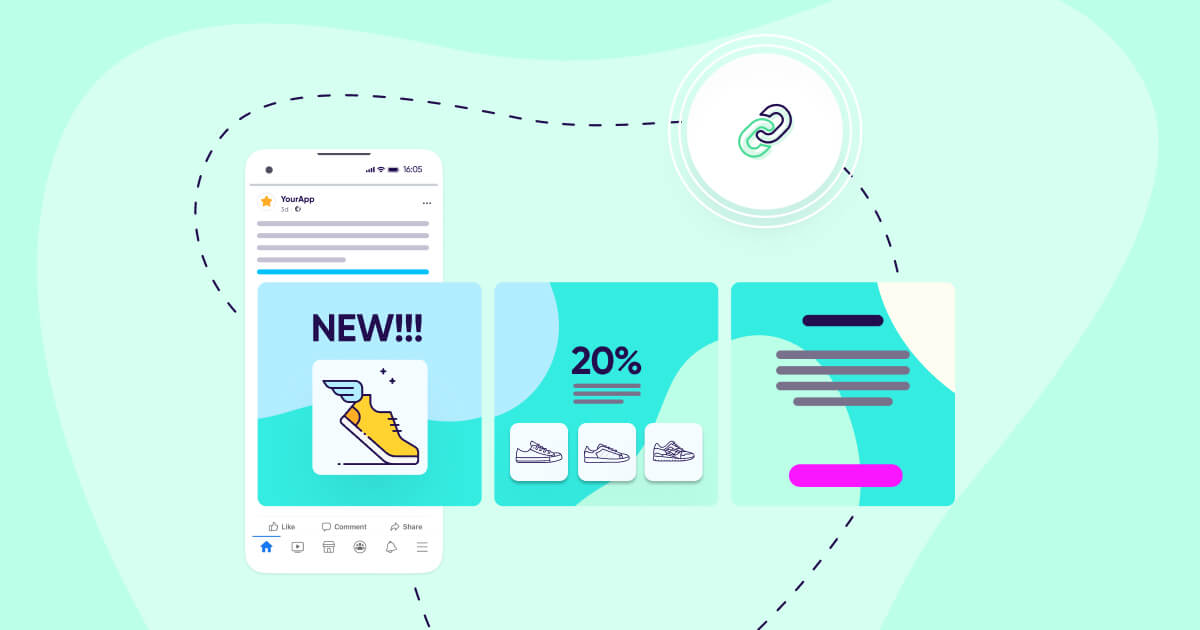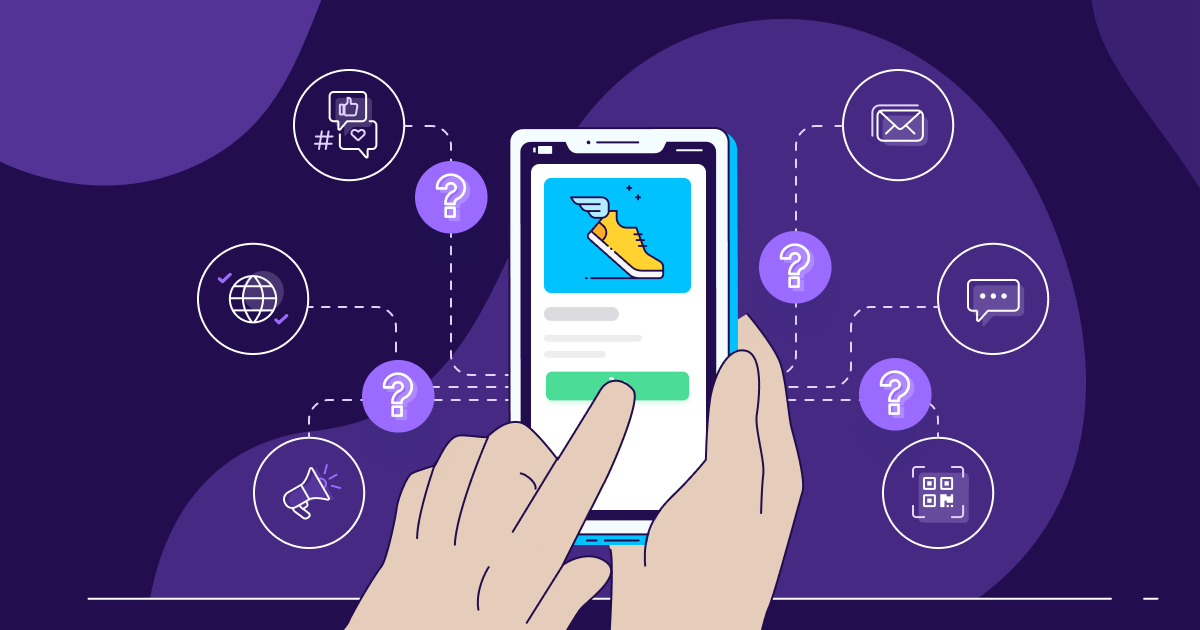
How 6 successful brands attract and keep customers with deep links
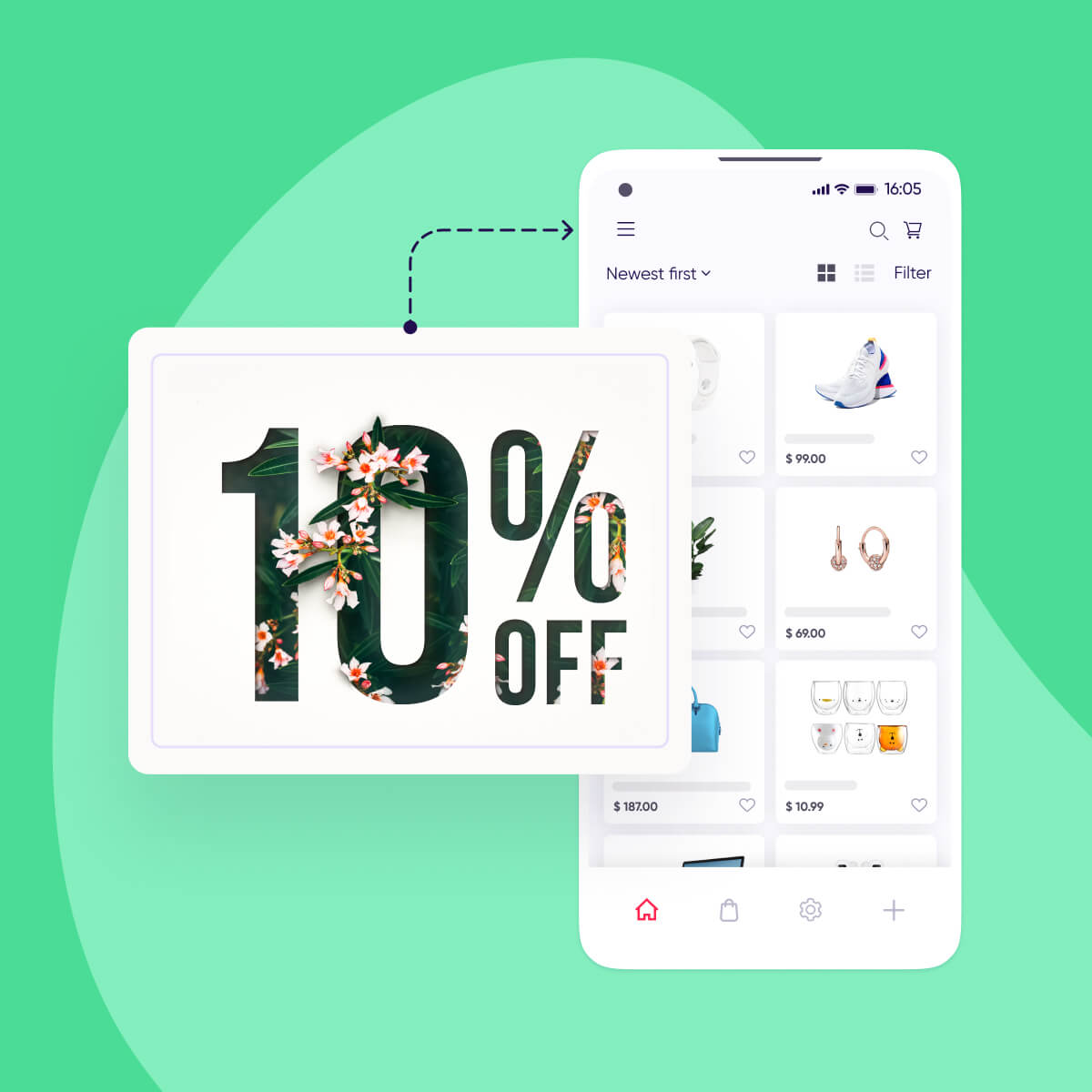

Most travelers agree that non-stop flights are the best. Hop on a plane from your home city and hop off at your final destination — no switching aircraft or searching unfamiliar airports for your next gate.
Deep links are like the non-stop flights of mobile app marketing. Users click a deep link from anywhere — social media, email, SMS, your mobile website — and land on perfectly contextualized content within your app. No unnecessary landing page layovers or searching unfamiliar menus.
The frictionless experience that deep links create are key to improve the performance of user acquisition, engagement, and re-engagement campaigns. Here’s how six brands use this versatile tool to give their app users a better experience and unlock higher performance from both paid and unpaid channels.
Booking.com: use deferred deep linking to contextualize first app use
Often people download an app midway through completing a task, like buying a pair of socks or booking their next vacation. If you interrupt their workflow, you’ll likely send them packing.
Booking.com, an online travel reservation platform, keeps the travel stoke high through the download process with deferred deep linking–a process that identifies new users and takes them to a preferred location in the app after they’ve completed the download.

Here’s how it works. Say a would-be traveler is perusing Parisian properties on the booking.com mobile website, and they’re compelled to click the “download app” button by a discount on lodging. The deep linking engine will identify that the user doesn’t have the app, then take them to the correct app store (Google Play or Apple’s App Store) to complete the download. When the new user opens the app for the first time, they’re taken directly to a list of Paris hotels to continue the reservation process.
Deep links are useful throughout customer onboarding. In fact, we found that brands get a 110% boost in day 30 retention rates when they use deep links to customize their welcome messages and onboarding processes.
Hopper: engage app users with deep-linked social posts
Nearly one out of every two installed apps are uninstalled within 30 days. But 90% of people who use an app at least once per week will keep it.
Travel platform Hopper keeps its user engagement high (and uninstall rate low) by creating travel stoke with Facebook posts and connecting users directly to relevant in-app content.
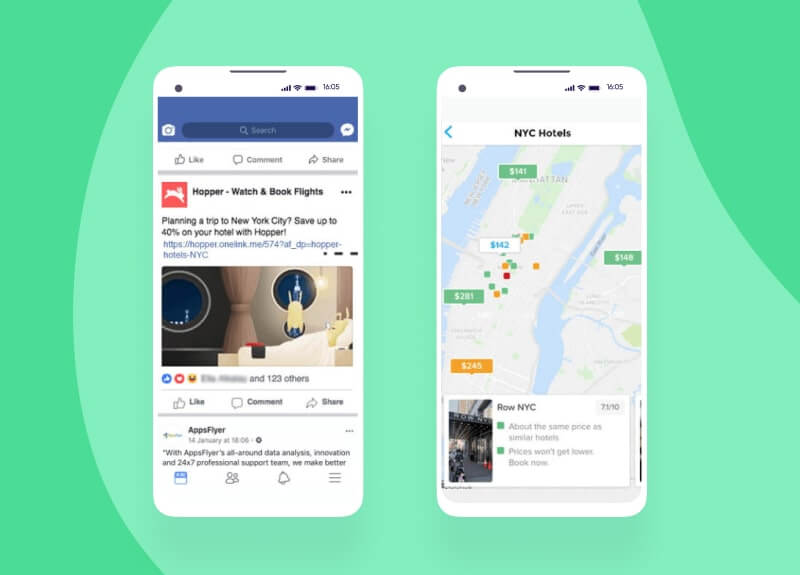
Hopper does this with open graph tags that show a preview of app content in Facebook posts and deep links that direct users to related content within the app.
This strategy works well for just about any app. Food, fashion, fun events — use anything that might catch a Facebook scroller’s attention and motivate them to take action.
Yummly: remove friction with email deep links
Email marketing might sound old school, but it’s still one of the most cost-effective ways to drive current users back into your app. Where else can you get an 8.75% click rate from a basically free ad?
The trick is to make the most of those clicks. Online recipe and grocery delivery platform Yummly does this using deep links to create a seamless email-to-app transition.
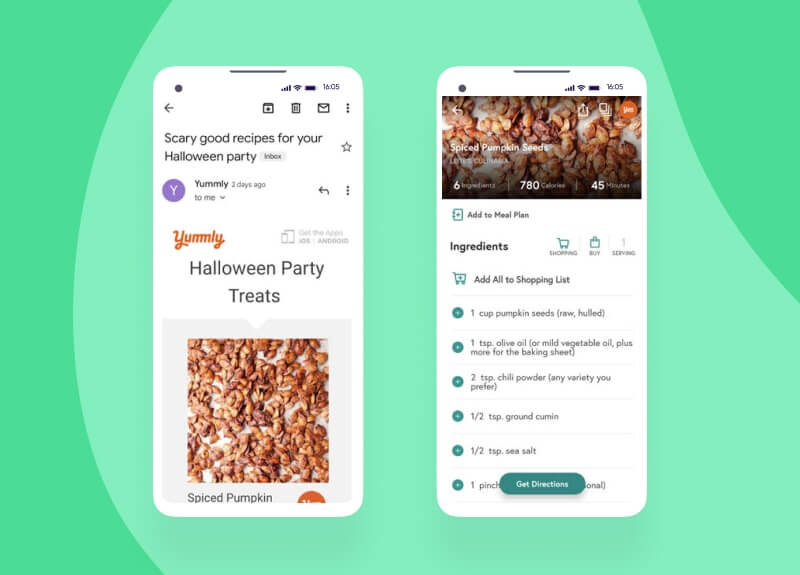
Yummly’s timely emails get followers thinking about what to cook for upcoming events. Then with a click, users are delivered to an in-app recipe, where they can make a shopping list and even order ingredients for delivery. That smooth-as-chocolate-silk-pie experience keeps people clicking on emails and returning to the app.
Pizza Hut: power up QR codes with deep links
QR codes bridge the gap between printed marketing materials and digital channels. Brands can make the journey from actual to app a lot easier for their customers with deep links.
That’s how Pizza Hut helped its users slice through the friction of using printed coupons in their app.
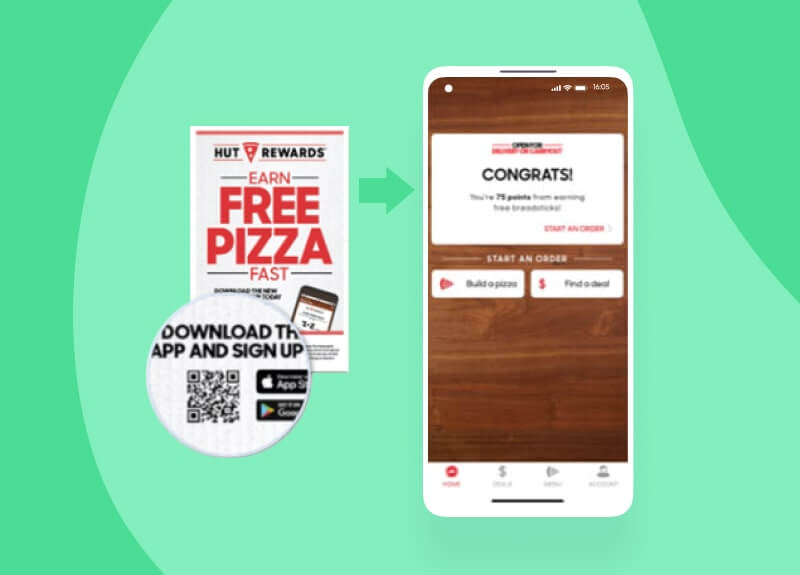
It started with a QR code and coupon offer printed on mailers, in-store displays, and delivery boxes. The deep link behind the QR code carried the coupon code to the app’s checkout page. That way, users wouldn’t have to transfer that information themselves, helping to speed along every conversion.
MyFitnessPal: re-engaging users with deep-linked push notifications
Re-engagement strategies are designed to remind dormant users why they loved your app in the first place. And if there’s ever a time to make sure your user experience is top-notch, this is it. (After all, you wouldn’t try to win back an ex with a half-eaten Hershey bar and a bouquet of wilted daisies.)
Fitness and nutrition tracking app MyFitnessPal uses deep link–powered push notifications to entice users back into their health diaries.
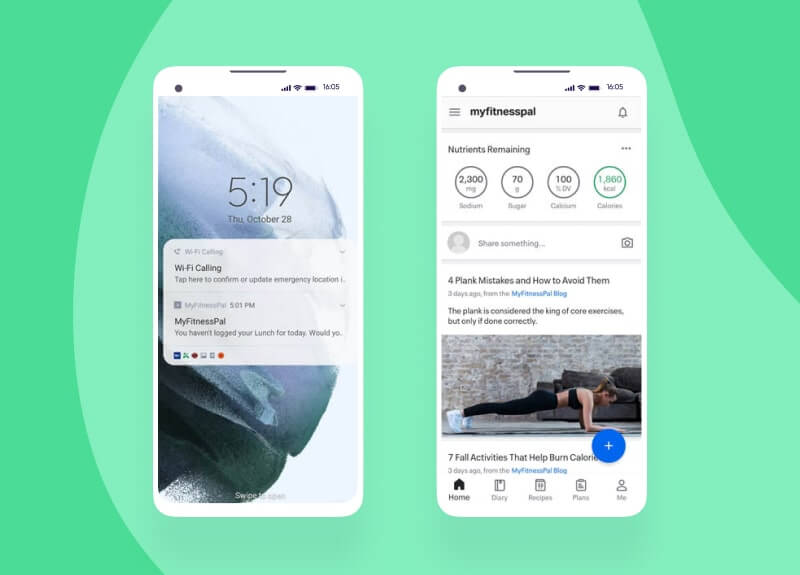
Like emails, push notifications have a high click rate. And the deep links allow MyFitnessPal users to get right back in the swing of tracking daily habits.
This strategy works well for an app that requires daily interaction. But it’s also useful for recovering lost revenue from abandoned carts and returning game players to the level they left behind.
Netflix: warming up chilled app users with deep-linking emails
Netflix essentially created the term “binge-watching”. Clearly, the streaming service has user engagement figured out.
But Netflix also knows a thing or two about re-engaging dormant users. They use deep links in re-engagement emails to remind viewers of shows they’ve left behind.
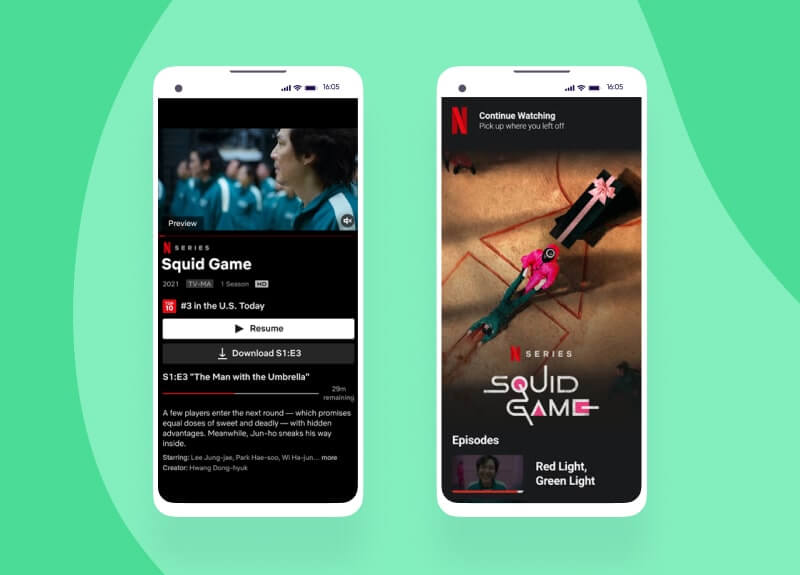
Once a watcher clicks the email link, their next stop is the most recent episode of a show they’ve started. It’s a creative and compelling way to leverage emails for user re-engagement.
Improve your CX with deep links
These are by far not the only interesting use cases for deep links: eCommerce site Letgo, financial app Stash, and weather app Accuweather all use the technology to improve the CX for their users.
Want to start using deep links for user engagement? Here are a few tips to get you started:
- Deep links are really just links that take users from one place (website, QR code, email) directly into a preferred location on your app
- Deferred deep linking follows a new user through the download process and send them to a preferred app location on first use
- Deep links are useful at every stage of the customer journey, from onboarding to re-engagement
- Deep linking is most successful when you focus on the user experience, not the technology
Now that you have the basics down, read our full return on experience guide to learn how deep links can help you create an unbeatable customer experience.


